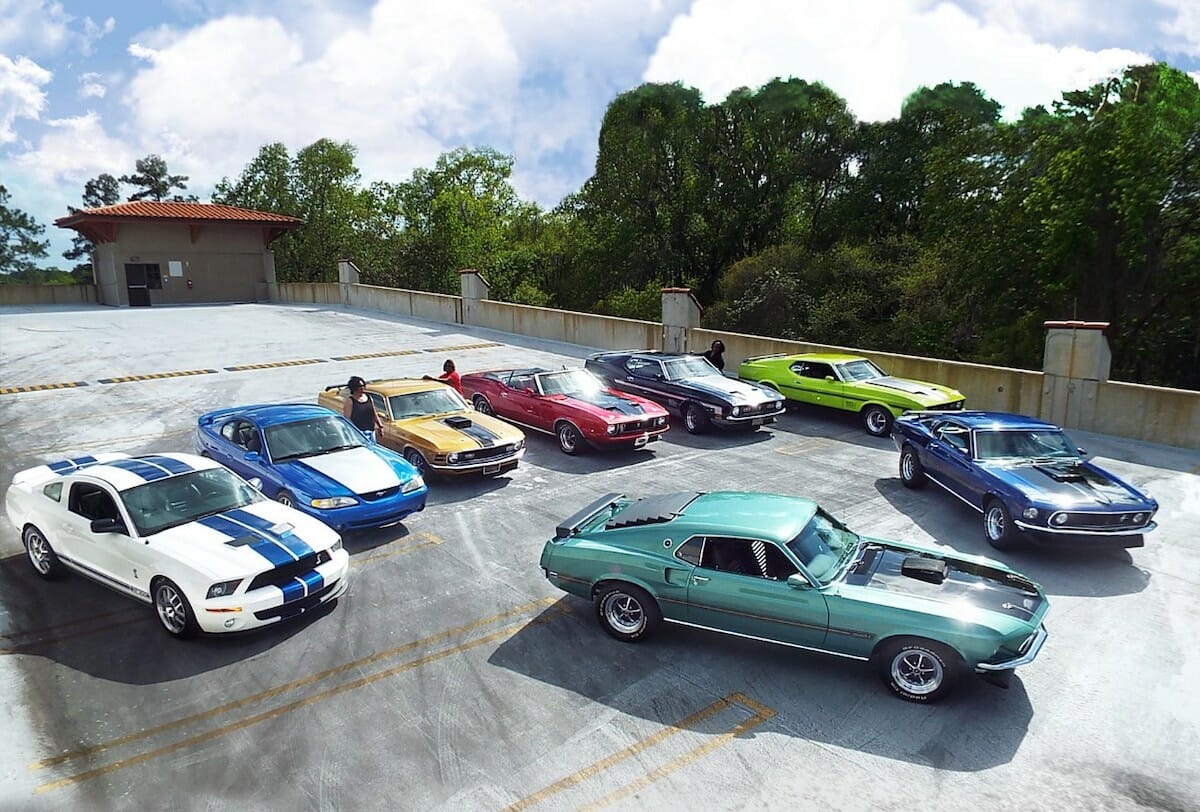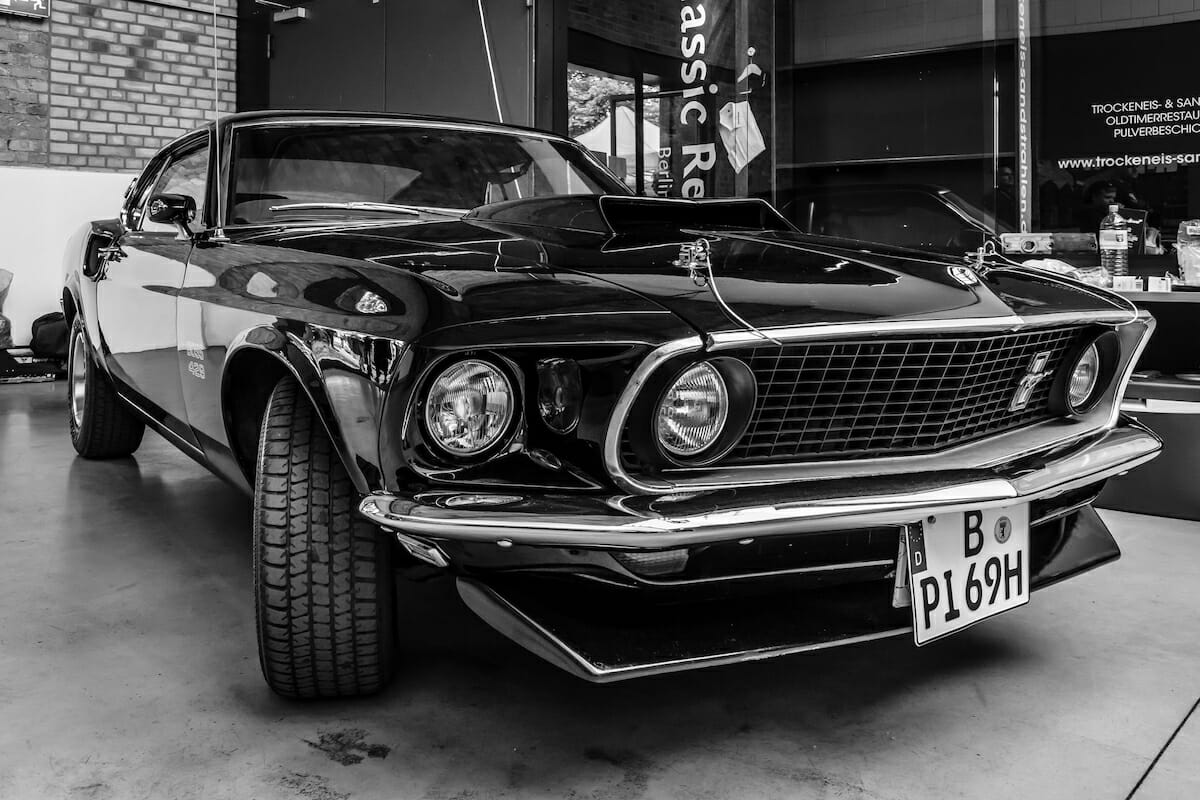Iconic big-block V8 started life as a gas-guzzling beast to power big cars, but it gained a loyal following in the performance world.

You’d be hard-pressed not to find someone bringing up the “Lima” engine family when talking about the history of Ford Motor Company. The term Lima comes from the fact that these engines were built in Ford’s Lima, Ohio plant.
Within the Lima family lies the legendary Ford 460 cubic-inch big-block V8. For modern terms, it’s worth noting that this equates to a massive 7.5-liters of displacement. The term “big block” almost feels like an understatement.
Though the lima engine days ended over 20 years ago, you still can find Ford 460 enthusiasts using the old-school big blocks for everything from daily driving old trucks and vans to high-compression, nitrous-breathing, fire-spitting, lighting-quick dragster builds.
While the small block format of V8s has mostly taken over the automotive world, there’s still plenty of love for the old-school big brute. In fact, there are still companies producing race-ready engines based on the Ford 460.
The Big Block Origin Story
Another name you might see when referring to the Lima engines is the Ford 385 series engine. Though, the name does not come from the displacement of any of these engines. Instead, it comes from the 3.85-inch crankshaft stroke of the 460 engine. You can easily see why many opt to refer to them as Lima engines; it makes things a little less confusing when all sorts of numbers are getting thrown around.
The 460 is not the only Lima engine. In fact, it isn’t even the most famous Lima engine. That honor goes to the 429 cubic-inch V8. If that sounds familiar, it should. The 429 is one of the most iconic engines put in the Ford Mustang. It was found under the hood of the Boss 429 Mustangs in 1969 and 1970. It also was used in the 1971 Mercury Cougar.
There was also a smaller displacement engine in the Lima family. The 370 cubic-inch big-block was found under the hood of medium-duty trucks like the F600 and F700.
Additionally, there was a performance version available through Ford SVO with a displacement of 514 cubic inches. While all those engines are excellent in their own right, we’re here to focus on the 460.

Ford 460 V8 Through the Years
The 460 made its first appearance in 1968 under the hood of the Lincoln Continental Mark III. While it was initially exclusive to the Continental Mark III, in 1972 made its way into Mercury vehicles and the Ford Thunderbird.
The engine would stay a staple of the Thunderbird until 1976. It also saw its final year in the Mercury Cougar in 1976, though other Mercury vehicles continued to use the 460 until 1978.
That, however, marks the end of the use of the 460 in standard passenger vehicles. The Arab oil embargo of the 70s saw manufacturers turning toward more fuel-efficient options as the price of gas shot through the roof.
That isn’t all she wrote for the 460, though. While it ceased being used in everyday passenger cars in 1978, the 460 continued being used in light-duty trucks like the standard F-150 and F-250.
Furthermore, the 460 could be found in Econoline vans and super-duty trucks. The 460 could even be found in many production RVs and motorhomes throughout the 70s and 80s.
All good things must come to an end, though. Production of the 460 and the Lima engine platform as a whole came to an end in 1998. It wasn’t at all a bad run, though. Facing tightening emissions restrictions and more powerful yet smaller engine competitors like the Ford Modular V8 makes it all the more impressive that the old school pushrod big block made it a healthy thirty years.
Ford 460: Technical Details
When they say big block, they mean it. The 460 engine is a massive chunk of metal that you almost need a shoehorn to get in and out of a car. The engine measures 34 inches long, 32 inches wide, and 30 inches high.
That means you need nearly 27 cu. ft. of real estate under your hood. While you’re grabbing the shoehorn, get yourself a decent engine hoist, too. These monsters weigh in at 720 pounds without any oil in them. As we mentioned earlier, big block almost seems like an understatement.
By today’s standards, the horsepower output of these big-block V8s is not all that impressive. Especially when you consider the post embargo changes that were made. However, it’s worth noting that these numbers were nothing short of substantial when they were initially released.
From 1968 to 1972, the pre-embargo 460 big blocks made 365 horsepower and impressive 388 lb.-ft. of torque. Peak horsepower was achieved at 4,400 rpm, while the peak torque figure came in at 2,800 rpm. This is why the big block has a stigma for low-end grunt. All the torque hits nearly instantly when you put your foot down. It’s a great feeling!
As we mentioned before, the 460 stroke is 3.85 inches. Additionally, the bore of the cylinders is 4.36 inches. Most of the power figures for 1968 to 1972 460s come from its 10.5 to 1 compression ratio. In their original format, these engines were nothing to sneeze at.
Unfortunately, 1973 brought substantial decreases to all the fun numbers on the 460. The bore and stroke remained the same. However, the compression ratio was dropped to 8.5 to 1, causing a massive decrease in power to meet emissions standards.
The compression ratio stayed that low for the remainder of its production. There we many different variants of emissions control devices, carburetor setups, and fuel injection systems over the years. Generally, the post-embargo 460s made between 205 and 275 horsepower, with torque figures settling between 345 and 375 lb.-ft.
There was also a variant of the 460 produced specifically for use in Police Cruisers. However, it didn’t differ in terms of power output as compared to the standard road-going versions.
Unlocking the 460’s Full Potential
The decrease in power did not deter hot rodders and racers, though. Despite the suffocation from the factory to meet emissions and fuel economy standards, the 460 still had a massive amount of untapped potential that could be dug out with some hand tools and a little know-how. To this day, if you venture to a drag strip, you’re likely to see a Foxbody or older Mustang running a carbureted 460 big block and putting down monstrous power figures.
According to Hot Rod magazine, a bone stock 460 block can make upwards of 900 horsepower. It’s very common to see 460 blocks undergo a little machine work, enlarging the cylinder bore and lengthening the crankshaft’s stroke.
Combined with high compression pistons, this is a winning formula for some monumental horsepower output. Even if you are a firm lover of electronic fuel-injected turbocharged small-block V8s like most performance builds have anymore; it’s easy to appreciate a good old-fashioned big block build.
There’s so much remaining love for the old-school big block Ford that you can still buy 460 crate engines from performance suppliers like Summit Racing. Many of the crate engines available are remanufactured authentic for 460s. There is even a 460-based Ford Performance engine with a massive 572 cubic inches of displacement readily available. There is a virtually unlimited supply of aftermarket performance upgrades for them, too.
This includes high compression forged steel pistons, performance connecting rods, cast-iron and aluminum aftermarket cylinder heads, performance intake manifolds, and the list goes on and on.
Additionally, finding stock parts is a nonissue. Many parts are still readily available at your average parts store, and finding a 460 in a junkyard is not at all uncommon.
Big Block V8s & the Future
Despite the Lima engine’s discontinuation in 1998, the love for the 429 and 460 engines seems to have only increased since they were removed from the market.
Despite the shift to smaller engines that make more power, there are still plenty of fans of old school across the entire spectrum of automotive enthusiasts. It isn’t just the racing crowd that is in love with the 460. There is a whole network of Ford truck enthusiasts that still daily drive their 460s and use them for things like pulling campers.
It’s easy to see why the world turned its back on big blocks. Ask anyone using a 460 as a daily driver or work truck what their average fuel economy is, and you’ll find that most of them don’t want to talk about it.
In general, seeing a double-digit number in a big block truck or van is a celebration worth breaking out the champagne for. While their maintenance is relatively affordable, driving one isn’t.
Their massive weight is a significant deterrent, too. Ford’s modern Ecoboost engines found in today’s F-150s make nearly double the power of a 460 and weigh almost 300 pounds less than the legendary big block. It seemed like the big block was gone for good and would never make a comeback.
The year 2020 came as a big shocker for many reasons.
However, the major head-turner for Ford fans was the announcement of the Godzilla engine. After nearly a decade of Ford’s focus on smaller displacement, higher efficiency engines, they took us all by surprise with the release of a 7.3-liter big-block V8 as an alternative to the 6.7L Powerstroke turbo diesel engine found in F-250s and F-350s.
It seems, then, the world isn’t quite finished with the big-block V8. It’s now more efficient than ever, and we’re excited to see what Ford and enthusiasts do with this engine.
Overall, the spirit of the 460 is alive and well. Not only that, 460 engines are still alive and well. After over fifty years, it seems these big blocks aren’t going anywhere any time soon.
Photos: Ford; DepositPhotos
